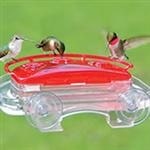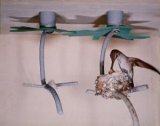Category Archives: Bird Watching
Interesting Hummingbird Facts
Hummingbird Facts and History
Author: Johann Erickson
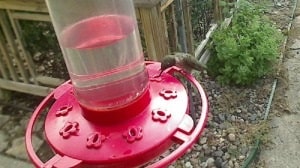
Hummingbird Facts and History
The following provides a few hummingbird facts and a bit of the history of hummingbirds. Sure to interest those who enjoy watching and feeding these tiny jewels of the garden.
The oldest historical mention of hummingbirds dates back to the Taino Native Americans, around the time of Columbus.
The Taino believe that hummingbirds are the spreaders of life on Earth, and their warriors were known as Colibir, or Hummingbird warriors,
because they are a peaceful bird that will defend their territory with the heart of an eagle.
How long they have been in America is unknown, but they have delighted bird watchers for many years, with their quick dashes into the garden, and the shine of the sun on brilliant feathers.
While there actually are duller colored birds, the ruby-throated hummingbirdis the most commonly recognized for its iridescent feathering, and dazzling ruby-red throat.
The color though, is not all it seems.
Hummingbirds get their unusual coloring from the fact that not all feathers are pigmented, or colored. In the duller colors, including the Rufous Hummingbird, the brown hue is actual pigment in the feather structure.
The oldest historical mention of hummingbirds dates back to the Taino Native Americans, around the time of Columbus.
The Taino believe that hummingbirds are the spreaders of life on Earth, and their warriors were known as Colibir, or Hummingbird warriors,
because they are a peaceful bird that will defend their territory with the heart of an eagle.
How long they have been in America is unknown, but they have delighted bird watchers for many years, with their quick dashes into the garden, and the shine of the sun on brilliant feathers.
While there actually are duller colored birds, the ruby-throated hummingbirdis the most commonly recognized for its iridescent feathering, and dazzlig ruby-red throat.
The color though, is not all it seems.
Hummingbirds get their unusual coloring from the fact that not all feathers are pigmented, or colored. In the duller colors, including the Rufous Hummingbird, the brown hue is actual pigment in the feather structure.
In the ruby-throated species, light refracting through the feather segments, breaking it up much like a prism would. Only certain levels of color will be seen by the human eye, and that color will change with every movement of the feather, or angle of the light striking it.
This is one of the features that makes them so charming to watch as they flit around a garden or feeder.
Hummingbirds are very fast, traveling at an average 25 miles per hour, with wingbeats of anywhere from 10-15 per second in the Giant Hummingbird, up to 80 per second by the Amethyst Woodstar. The ruby-throated hummer falls into the middle range, at about 53 beats per second.
To sustain such rapid and prolonged activity, the hummingbird's heart must beat accordingly. For birds that are hot, or sleepy, that can be as low as 50-180 beats per minute, but a heart rate of an amazing 1360 beat per minute has been recorded in a Blue-Throated Hummingbird.
All this activity requires a humming bird to eat almost continually, to fuel the activity that will maintain its 105-109F body heat. That means dining as many as 15 times an hour, on high-energy food.
In volume, they consume up to eight times their body weight a day. But reduce the nectar to a solid by eliminating the water, and it would amount to their own bodyweight.
A hummingbird can starve to death in as little as two hours, if still active. That makes rescue of birds trapped in garages or other enclosed areas, imperative within a short time.
At night, their "thermal generators" shut down as they rest, and allow their body temperature to drop, so that less energy is used up while they sleep.
If you enjoy watching these delightful little birds, and are also an enthusiastic gardener, why not plant clumps of flowers or bushes, to bring them into your yard?
Hummingbirds are creatures of habit, and will develop their own paths to food, checking them frequently and on a daily basis.
Once they find out you have goodies, they'll return over and over. Other hummers will follow, and you may then get to see hummingbird behavior at its worst, as they dive at each other to protect their food sources.
Good choices of food producing plants for hummingbirds include such trees or bushes as Azaleas, Mimosa, Weigela, Cape Honeysuckle and Flowering Quince. Another semi-permanent attraction is a perennial bed with Bee Balm, Columbine, Lupine, Coral Bells and Canna.
You can also plant a wide range of annuals like Fuschia, Impatiens, Petunias and Firespike, but consider growing some of your own plants from seed, as many flowers that are nursery grown, tend not to have as much nectar.
Hummers will be overjoyed to discover this bonanza of blooms, and the tiny bugs that constitute the protein source of their diet.
To make sure you enjoy these little feathered friends for the whole season, hang some hummingbird feeders around your patio or gardens.
But make sure there is a bit of distance between them, to avoid the squabbles, which can be quite a sight!
Because hummers are attracted to red flowers, you'll find many of the hummingbird feeders available, are also colored red.
This isn't an absolute necessity, but it can be a bright spot in your garden. And the feeders come in all kinds of charming shapes from a hanging bunch of grapes, to a giant strawberry.
Commercial powdered "food" formula is available, but you can easily make your own by combining one part sugar to four parts water, and boiling it for two minutes, then cooling and storing in the fridge.
Never use honey, which can ferment, or red dye, which can be harmful to the birds.
Only fill your hummingbird feeders to the one-third or halfway mark, as it would take many birds to empty the contents, and the feeders will need cleaning every few days to prevent the occurrence of mold.
Wash in mild dish detergent, with no more than 10% bleach, and rinse several times. If you have mold inside the feeder and can't reach it with a bottle brush, put some sand in with the water, and swish that back and forth, until the mold is rubbed off.
Hummingbird Trivia Facts
- The hummingbird is so small, that an insect, the Praying Mantis is its natural enemy.
- They are the only bird that can hover, and fly backwards as well as straight up or down
- Hummingbirds can't walk
- The average life of a hummingbird is 3-4 years, although one specimen was caught in 1976 in Colorado, banded, and captured again in 1987
Migration Fact
Often the question is asked, "do hummingbirds ride on the backs of geese during migration?" While this may sound like a reasonable solution, it is not true.
Hummingbirds that migrate, do so on their own wing power.
When Do Hummingbirds Leave For Winter
Leaving your feeders up as long as they are still coming will help them fuel up before their 600 mile journey across the Gulf of Mexico.
A hard date isn't possible since there are several factors that determine migration timing. Ruby-throated hummingbirds are usually what people are asking about.
The best advice I can give is to leave feeders up an additional two weeks past the last time you saw any feeding. Usually sometime in October. But don't hold me to that.
More
The How To's Of Attracting Hummingbirds
Information On Migration and Hummingbirds
Know The Ruby-throated Hummingbird Habits
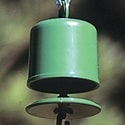 Ant Guard |
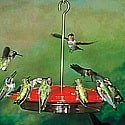 Aspects HummZinger |
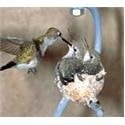 Hummingbird House |
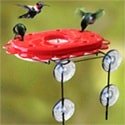 Window Mount |
Ruby-Throated Hummingbirds
Ruby-throated Hummingbirds
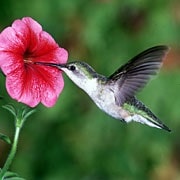
An understanding of the hummingbirds nesting, mating, and feeding habits may aid you in attracting and keeping these small wonders in your backyard garden and around your bird feeders.
These birds may be small but they don't always seem to know it. These tiny birds have the habit of staunchly defending their territory at the bird feeder during the fall migration. Males will chase other males away letting only his females and young to feed. (maybe not even them)
Description
The Ruby-throated only measures 3 3/4 inches long, and is the widest-ranging of all North American hummingbirds.
This green and scarlet little bird is the only one likely to be seen east of the Mississippi River and certainly the only to breed in the area.
The male Ruby-throated has green upperparts and a iridescent red throat. Although depending on light, the throat may appear black. The breast and middle are whitish.
Female Ruby-throats have green upperparts and whitish underparts.
Nectar Recipe
Humming Bird Sugar Water Mixture
A feeder filled with sugar water will attract this relatively tame visitor. Just mix 1 part white sugar with 4 parts water. Boil the mixture 3 or 4 minutes and let cool. Fill your feeder and store any of the leftover nectar recipe in the refrigerator. Your feeders need to be cleaned throughly every 3-4 days.
Feeding Habits What Hummingbirds Eat
These birds must eat all day long just to survive. In addition to nectar from flowers and your sugar water feeder, these birds eat small insects, beetles, ants, aphids, gnats, mosquitoes, and wasp.
As you can see, it's to your advantage to attract these jewels to your backyard.
As you can see, it's to your advantage to attract these jewels to your backyard.
Got an interesting story about these birds in your backyard? Please Share it With Our Visitors. Got a picture? - Even Better! To share your Click HereTo Read What Others Have Said Click Here
When To Take Feeders Down
Many ask the question "When do I need to take my feeder down?" A common myth is that leaving your feeders out too long will cause the hummers to stay longer than they should. This just isn't true.
The recommended best time to stop feeding hummingbirds is two weeks after you no longer see them visiting your yard and feeders. As long as you still see them visiting keep providing for them. This will allow them to store fat resources for their long migration.
If a freeze is predicted, bring your feeder indoors for the night and return it as early in the morning as possible. They need to refuel after a cold night.
How They Stay Warm
We're often ask "how do hummingbirds stay warm at night?" Well, along with the normal things birds do such as puffing out feathers for better insulation and finding sheltered locations to roost, these birds have the ability to reduce their temperature and slow their metabolism down. This is referred to as "Torpor".
Think of it as a mini hibernation just to get through a cold night. They are not the only birds capable of doing this but neither can all birds do this.
We get emails from visitors who find these birds in a state of torpor and hanging upside down on the feeder. Other times, early in the morning, some people have picked them off the feeder thinking they were ill.
It's is always best to wait and see. Let them come out of this state at their own pace so that no harm is done to the bird.
Nesting Habits
When looking for Ruby-throats nest, you'll need a keen eye. Its nest is a cup of plant down and spider web, covered with flakes of lichen, placed 5-20 ft. above ground. Look for a horizontal limb with a slight downslope.
Two white eggs are incubated for about 20 days by the female humming bird and the young will leave the nest 20-22 days after hatching.
These birds don't reuse a nest from season to season but may reuse it in the same season for its second brood. They often return to the same territory from year to year and maybe to the same shrub or tree. Nest are very small and are easily destroyed by winter weather but remember, it's illegal to remove or take any nest that you may find.
May attempt 2 broods each season.
Here are a few interesting facts and behavioral habits:
- In spring, the male defends his territory of about 1/4 acre.
- In dive displays, he flies in a U shape, rising 10-40 ft. on each side.
- After mating, the female builds the nest and raises the young alone.
- The flight speed has been clocked at 25 mph and estimated at up to 50 mph
- The average man burns about 3,500 calories a day. If the daily output of these birds were calculated for a 170-pound man, he would need to burn about 155,000 calories
- Hummingbirds do not ride on the backs of geese during migration. They migrate on their own power.
- Generally, adults birds migrate first, while the young continue to feed and grow before migrating.
Some Ruby-throats migrate 600 miles across the Gulf of Mexico. During fall they will store enough fat to double their weight in order to make the long trip. That's quite a feat for a bird that weighs about the same as 2 1/2 paper clips!
More Information:
Attracting Hummingbirds With Flowers And Plants
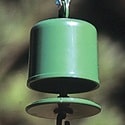 Ant Guard |
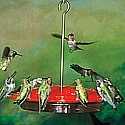 Aspects HummZinger |
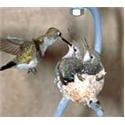 Hummingbird House |
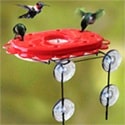 Window Mount |
Attracting Humming Birds
Attracting Hummingbirds What Are The Best Flowers And Plants

When it comes to attracting hummingbirds, everyone wants to know what types of flowers and plants do these birds like best. And with good reason These birds can be a joy to watch as they hover and flit from flower to flower.
I'm going to guess that you already know the very best way of attracting these birds to visit your yard is by providing a feeder. But now you're getting serious and want to provide more natural food sources.
You want to create a hummingbird garden, and I say, good for you! You're taking the next step to providing for these birds in a natural kind of way. But before you run out and get a bunch of flowers they love, A word of caution.
Be careful about what plants you choose. While the chart below offers several ideas, be sure to talk things over with your garden center folks.
Many plants that work the best for attracting Hummingbirds can get out of control and overtake your yard and garden. Consider the space you have to devote to this cause. Some vines like Trumpet Vine will pop up with little trees all over your yard if it isn't controlled. I speak from experience.
Some Columbine varieties will self sow and you'll end up with more than you want. On the other hand, it's a great way to add more without any more expense.
I would suggest that you also create several different locations throughout your property to plant flowers and shrubs. The reason for this is that Hummingbirds can be very territorial when it comes to feeding locations. If you provide several little pockets for them, all will have a better chance to feed and your birds will love you for this.
Don't forget that these birds are with us well into fall. Make sure that you offer nectar rich flowers that bloom late into the season. Migrating birds will need to bulk up for their long flights over the Gulf.
The most important part of attracting hummingbirds with plants is to plan. And of course, always provide Hummingbird feeders. That way you'll never have to worry if there is enough in the garden to take care of them.
Something to Keep in Mind
In general, birds have a weak sense of smell and hummingbirds are no exception.
Discovering food sources by sight rather than smell. With this in mind, fragrance of flowers has little effect on whether hummingbirds will like them.
Nectar rich flowers will be more inticing to them.
The chart below shows a few nectar rich plants that will help in attracting hummingbirds.
Favorite Plants For Attracting Hummingbirds
| Annuals | Perennials | Vines | Shrubs |
|---|---|---|---|
| Fuchsia | Bee Balm | Coral Honeysuckle | Butterfly Bush |
| Impatients | Canna | Cypress Vine | Flowering Quince |
| Jacobiana | Cardinal Flower | Morning Glory | Lantana |
| Jewelweed | Coral Bells | Scarlet Runner | Manzanita |
| Petunia | Four O'Clocks | Trumpet Creeper | Mimosa |
| Salvia | Foxglove | Canary creeper | Red Buckey |
| Shrimp Plant | Hosta | Carolina jasmine | Tree Tobacco |
| Snapdragon | Lupine | Glory vine | Turks Cap |
| Nicotiana | Columbine | Cypress vine | Weigela |
When gardening to attract hummingbirds, select a variety of flowers and plants with different bloom times, spring, early summer, late summer, and fall. Read the labels of any plants you purchase or ask the staff at your local garden center for this type of information.
Avoid using chemicals especially pesticides around any flowers you select for these birds. Hummingbirds eat tiny insects as part of their diet and these can kill the adults and their young.
You may want to provide nesting materials to encourage these birds to nest in your backyard.
Got an interesting story about Hummingbirds in your backyard? Please Share it With Our Visitors. Got a picture? - Even Better! To share your story or read what others said Click Here
Downy like materials, spiderwebs, ferns, moss and lichens are the prefered nesting materials of the hummingbird. Willow and eucalyptus trees provide downy like materials as mentioned above.
Water
Hummingbirds do not use traditional types of birdbaths. Instead, they prefer ones that spray a mist or have fountains. Rather than splashing in a bath like most of our back yard birds, Hummingbirds fly in and out of a spray of water. You may want to consider adding a misting type. They are usually sold for human use while sunbathing.
I see them around in the summer. They hook up to a hose and intermittently spray a mist. Probably not a good idea for humans but will work well for the birds.
Place them near your flowers. I would only use it while I was able to watch as it's probably not very economical.
By incorporating a few of these suggestions you'll greatly improve your chances of having hummingbirds filling your yard all summer long.
More Resources About Planting For Birds: Bird Gardening
